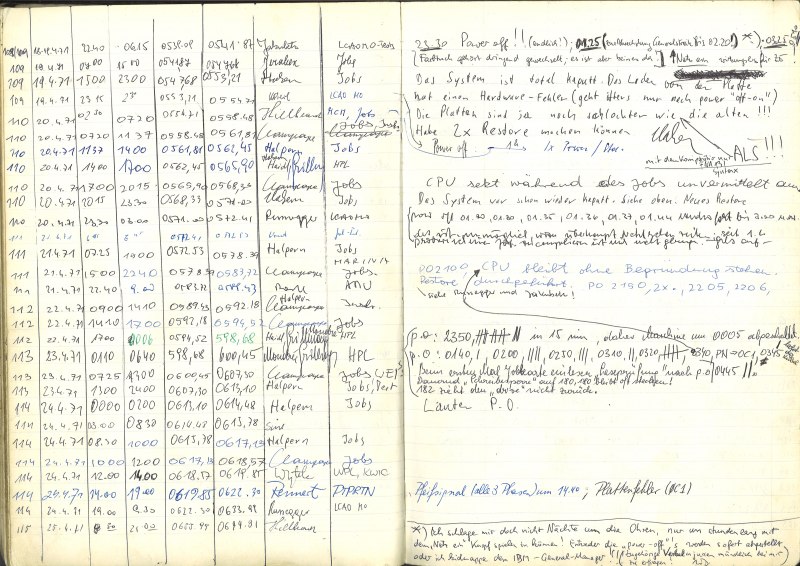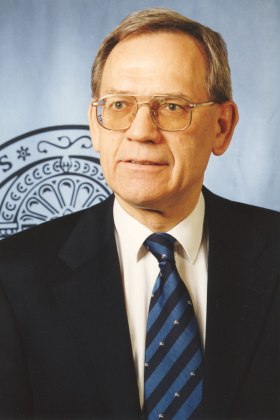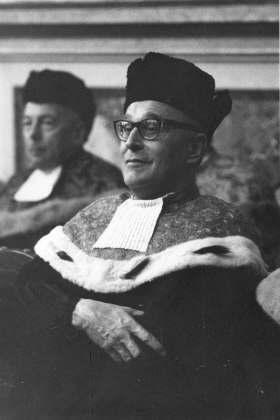How a university computerizes itself
This text traces – in a broad outline – the arrival of digital computing at the University of Vienna. Contemporary history studies on the establishment of computerization, starting with the first programmable computing facility in the early 1960s, reveal one significant flaw: the downright tumultuous entrance of digital computing technology – also a technology of data storage and word processing – has brought about such a fundamental transformation in the academic world in less than half a century, that apparently there not yet been time to analyze this process historically.
Arrival of electronic computing
The root of the establishment of informatics at the University of Vienna is – maybe surprisingly – located in statistics, which, in its methodological proximity to astronomy – also a discipline that requires a lot of calculations – is the cradle of mechanized calculation. At the University of Vienna, the direct connection between statistics and data processing was made by professor of statistics Slawtscho Sagoroff (appointed in 1955). Before the backdrop of the Cold War and thanks to his connections to the United States, Sagoroff, an economist, diplomat and world citizen of Bulgarian origin, was able to procure a sizeable donation of 80,350 US dollars from the Rockefeller Foundation. This enabled the purchase of a Burroughs 205 Datatron computer with an academic discount from the manufacturing company. The machine was only officially dedicated to its purpose in 1962, due to the construction of the “Neues Institutsgebäude” (“New Institute Building”) at Liebiggasse 6/Universitätsstraße 6 forcing the first attempts at operating it in 1960/61 to be undertaken under slightly adventurous circumstances in the construction site.
The computer at the Institute of Statistics quickly developed a strong appeal. Sagoroff, for example, referring to the report period of 1962/63, writes of a community of users that “currently encompasses 25 institutes at the Universities of Vienna, Graz and Innsbruck”. In this sense, the computer soon had the status of an Austrian “Scientific University Computation Center”. Particularly theoretically oriented chemists, among them Gerhard Derflinger and Günther Vinek, began programming the Datatron for their quantum chemical dissertation projects. Apart from questions of natural science, mathematical-numerical problems were also examined with the help of the machine, for example very early in the implementation of factor analysis, as it was relevant for psychological and sociological uses. In 1968 the by that point technologically outdated and no longer powerful enough Datatron was replaced by an IBM 360 Model 44 – again at the Institute of Statistics. Although the new IBM 360 computer was a dedicated number cruncher in its technical design, in contrast to the Datatron it was equipped with enough external storage media to also save administrative data persistently and for a long time – for example for the electronic enrolment process and the processing of the new Austrian university statistics. Furthermore, it was now possible to implement software in higher programming languages (mainly FORTRAN), thereby achieving a certain degree of “machine independence” in the application programs. This offered a completely new perspective for scientific computing programs and significantly broadened the user base by making it possible to use programs (largely in the form of reusable subroutine collections) from different sources, for example CERN in Geneva.
Medical applications
A second nucleus of electronic data processing at the University of Vienna was formed at the Second Medical University Clinic under chief physician Prof. Karl Fellinger with the computer IBM 360 Model 30, which was put into service in 1967/68. It was co-financed by the “Broadcast Donation of the Austrian Public – Fight Cancer – 1968”. At this computation facility the first data systems to collect and administrate medical patient data were implemented, which supplied clinical data for medical-statistical research. A specifically Viennese phenomenon was the early use of the computer in the clinic operations at the General Hospital, which led to the linking of medical research to running treatments, as well as to the computerization of ambulances, stations, and laboratories.
From a rarity to a universal service
Under Prof. Sagoroff there already were plans to move the computation center from the Institute of Statistics to an independent, inter-faculty organizational entity. The “Interfakultäres Unversitätsrechenzentrum” (“Inter-Faculty Computation Center”, IRZ) was formally established in October 1969 by a decision of the Academic Senate. The IRZ would consolidate all computational responsibilities and tasks of the computation centers of the university. In the end, only the IBM 360-44 from the Institute of Statistics and the in the meantime established “Physics Process Computer System” were organizationally merged in the IRZ (with their spatial division staying intact), while the Medical Computation Center remained independent. The latter was reorganized in 1973 following the example of the Institute of Statistics with the foundation of the Institute of Medical Computer Science, dividing it into the clinic (Second University Clinic for Gastroenterology and Hepatology) and a “computation center”.
Via several intermediate steps – for a time the Computation Center at the University of Vienna was connected to its counterpart at the Technical University of Vienna through a computer network – the current Zentraler Informatikdienst (Computer Center, ZID) was created. Under the farsighted and competent lead of Peter Rastl, also a chemist who graduated from the University of Vienna and gathered programming experience “in-house”, the Computation Center was a significant actor in the introduction of the internet to the University of Vienna (and beyond it) since the late 1980s. In this way, it paved the way for an important part of the academic infrastructure that has become indispensable for research, teaching, and administration.
-

Burroughs Datatron, die erste Rechenanlage an der Universität Wien, Neues Institutsgebäude (NIG)
-

IBM 360, die zweite Rechenanlage an der Universität Wien, Neues Institutsgebäude (NIG)
-
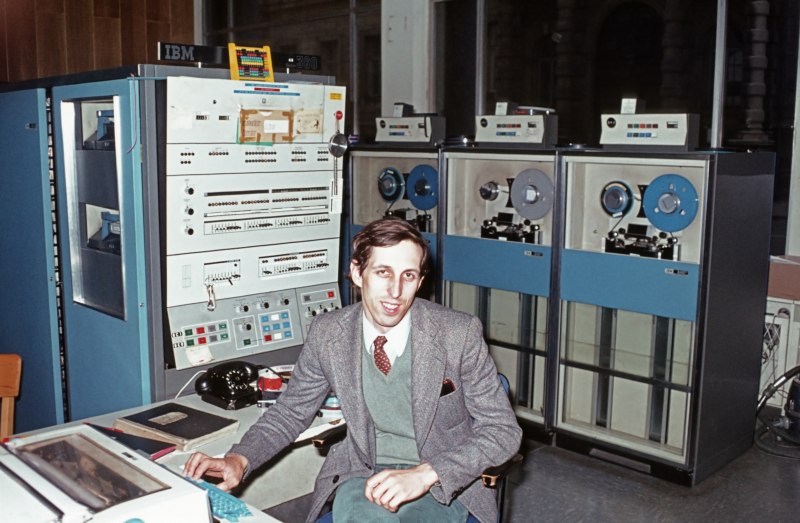
Dr. Peter Rastl als Leiter des Zentralen Informatikdienstes (ZID) der Universität Wien
-
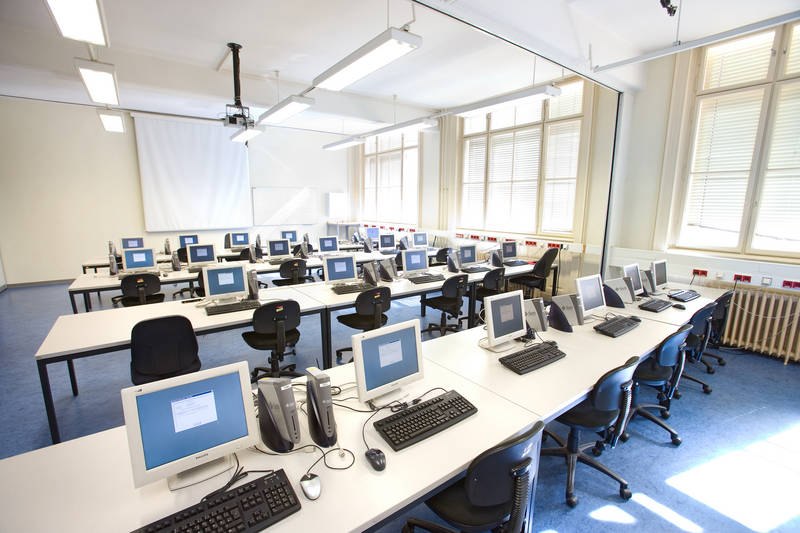
Computerraum (Hörsaal 27) im Hauptgebäude der Universität Wien
Last edited: 10/11/24

